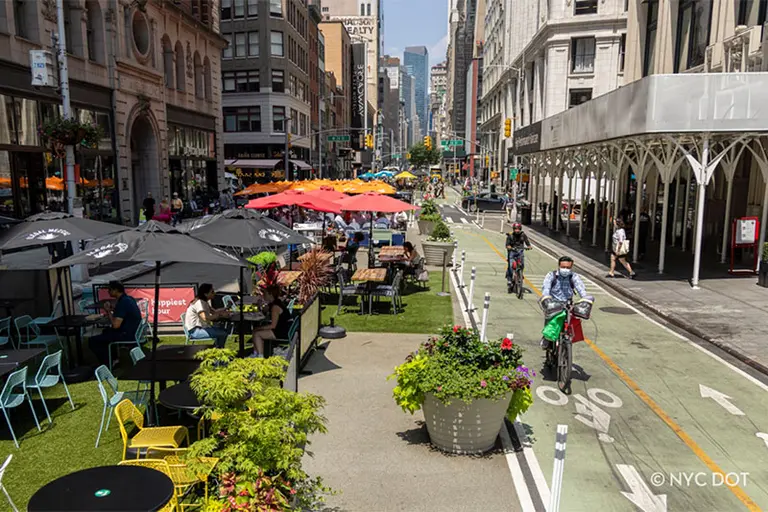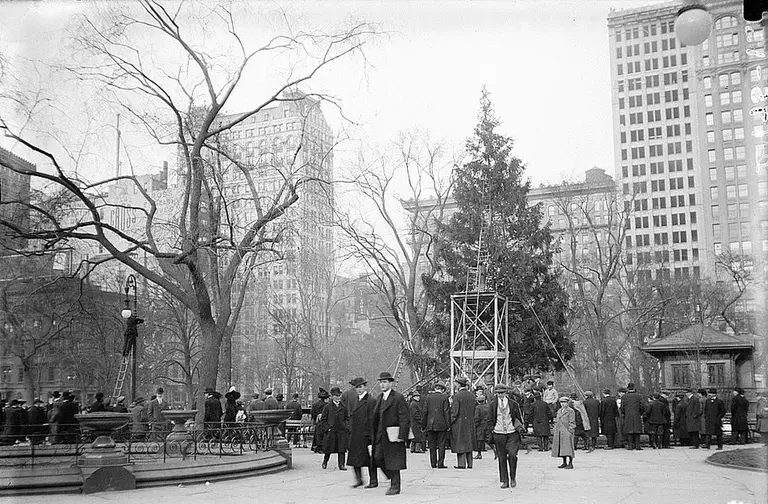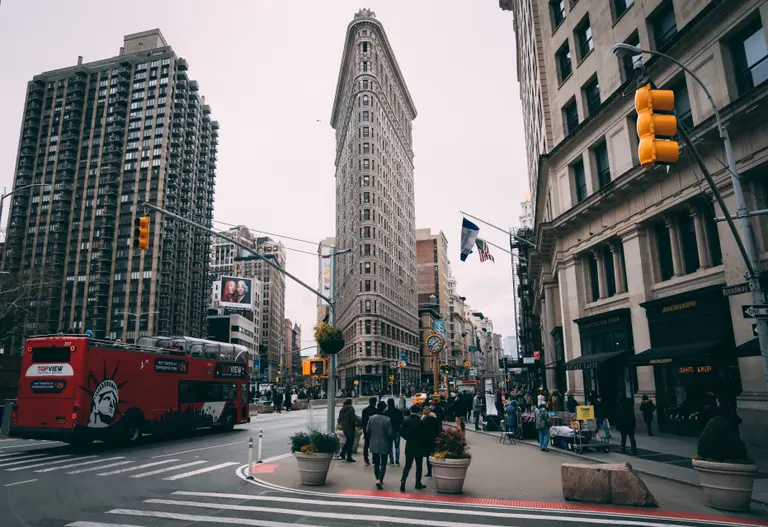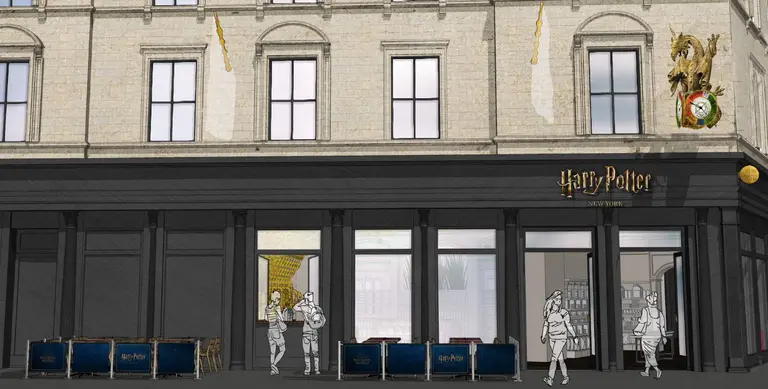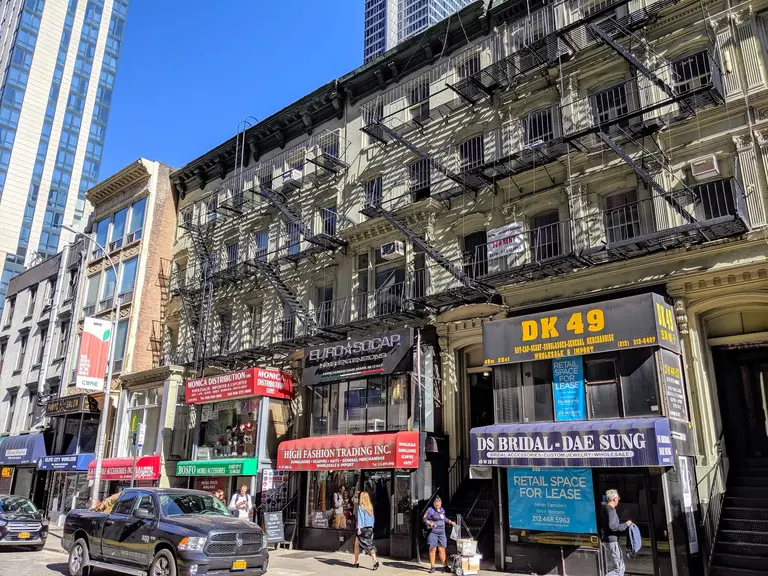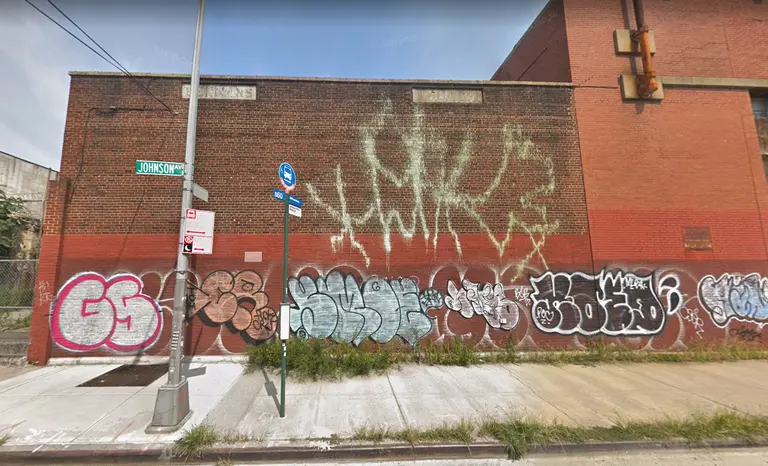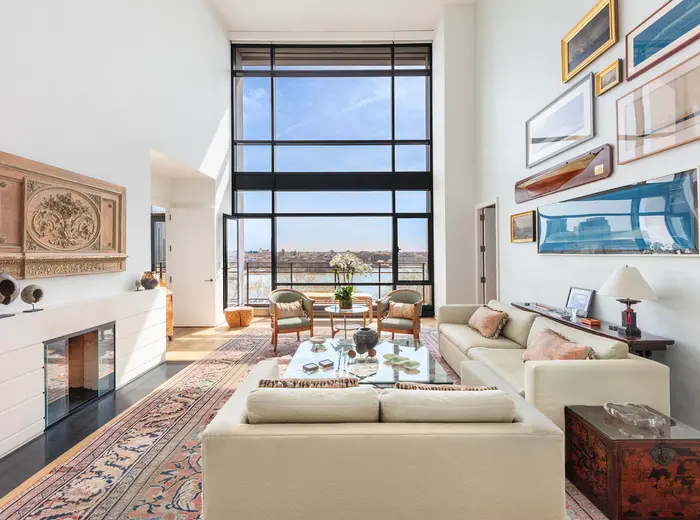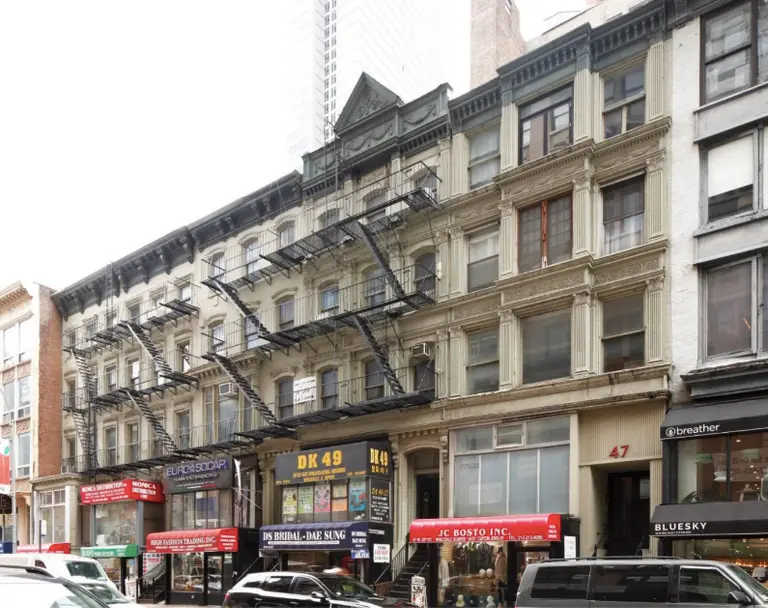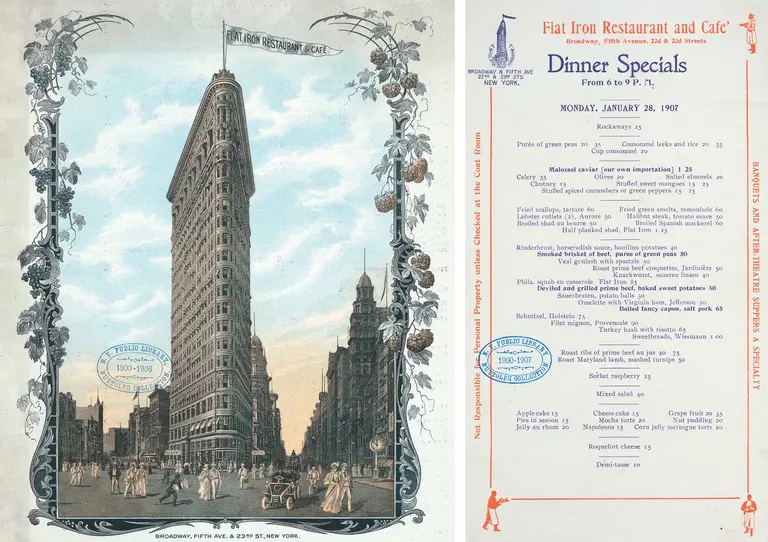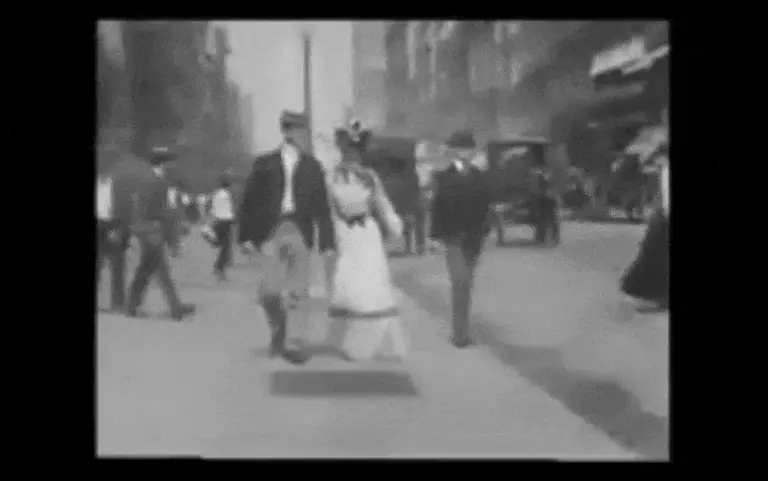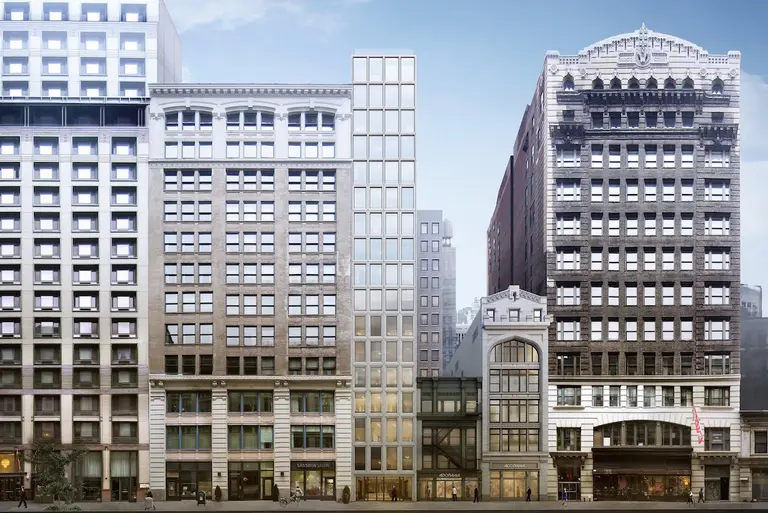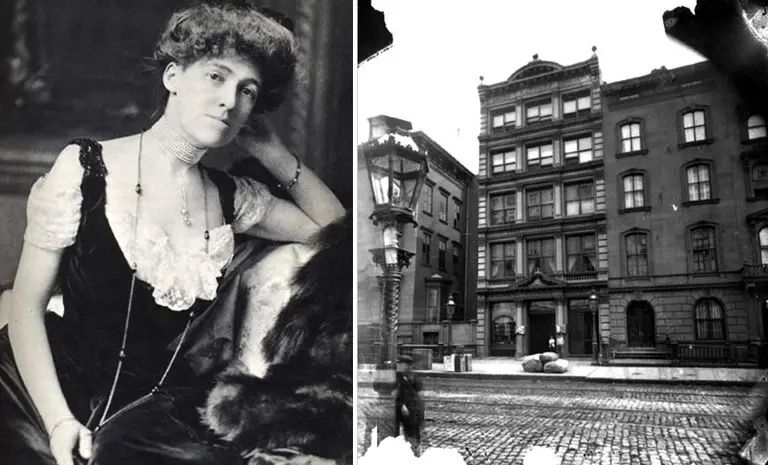First hearing for Tin Pan Alley’s possible landmark designation draws debate
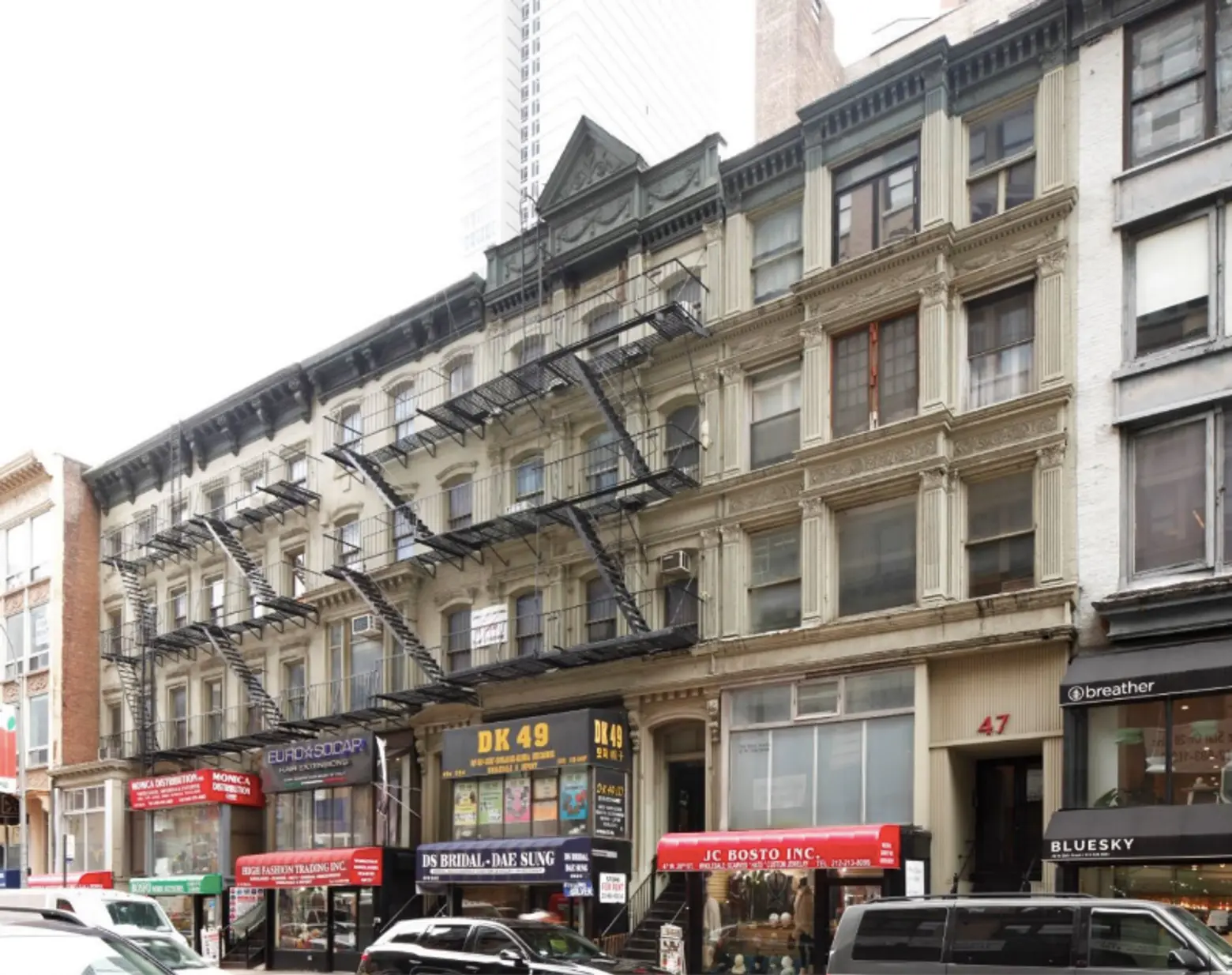
Via LPC
The Landmarks Preservation Committee heard mixed testimonies yesterday during a public hearing over the designation of five buildings on West 28th Street between Fifth and Sixth Avenues known as Tin Pan Alley. The buildings in question—ranging from 47-55 West 28th Street—are notable for the significant concentration of sheet music publishers they housed during the late 19th and early 20th centuries. As music publishers continued to flock to the block, the nickname “Tin Pan Alley” was coined in 1903 to describe the sound of piano music that could be heard from every corner. Though most everyone in attendance agreed on the historical significance of these buildings, some pointed to the racist tunes that were also written there as a reason to block the landmark designation—with even the buildings’ owner, controversial developer Yair Levy, arguing against it.
As 6sqft previously reported when the buildings were calendared (the first formal step in the historic status designation process) in March, they not only represent an area where music flourished, they were also where the business of entertainment was born:
The sheet music firms housed in these buildings revolutionized the way the music industry created, promoted and consumed popular music…The name became an all-inclusive term for the music production industry in America in general; it became the inspiration for the music studios of London’s Tin Pan Alley on Denmark Street from 1911-1992.
According to the New York Post, Levy’s attorney Ken Fisher commissioned a 39-page report from architectural historian Andrew Alpern, which outlines the racist songs that came out during that time, suggesting that this darker aspect of the area’s history is grounds to not designate the buildings. “[Tin Pan Alley’s] contribution was making bigotry socially acceptable, like having these lyrics brought into the living rooms around the country and justifying the stereotypes of blacks as less than,” Fisher said, while showing various album covers to make this point.
On the other hand, Tin Pan Alley is also known for giving unprecedented opportunities to songwriters of color as well as immigrants of Eastern European Jewish descent. The country’s first African-American owned and operated music publishing businesses had offices here.
“If I remove Jim Crow, and I remove The Klansman, from history, I also marginalize the Civil Rights Movement—do we take away Huckleberry Finn from our libraries? No, it informs my children what my grandmother’s struggle was about,” said Claudette Brady, founder of the Bed-Stuy Society for Historic Preservation, as Curbed reported. “When non-black people make issues about what my people should find offensive, I am highly offended.”
The five Italianate-style row houses are zoned for commercial use and would likely be replaced by skyscrapers. “I have nothing against tall buildings—I’m a member of the Skyscraper Museum—but we should not be building tall buildings and sacrificing our really irreplaceable cultural history,” George Calderaro, Project Director of the Save Tin Pan Alley Initiative of the 29th Street Neighborhood Association, told Gothamist.
While the ground floors of each building have been converted to retail, the upper levels retain their historic detail. Levy—who, by the way, was banned from selling real estate securities for life after being found guilty of depleting the reserve fund of a failed Battery Park City condo conversion—bought the buildings in 2014, and though the history his attorney cited is real, it’s unclear what his motivations are.
The Historic Districts Council, who has been strongly advocating for the preservation of Tin Pan Alley since 2008 argued for “the broad and meaningful public appeal this designation has.”
“It is sometimes difficult for people to understand what is being preserved when landmark designation is proposed for sites of historic significance. Comments such as ‘these buildings have been altered, they look nothing like they did Back When!’ or ‘music isn’t made there anymore – why do you want to save these?’ miss the point,” executive director Simeon Bankoff said. “One’s understanding of the actual events which happened on Tin Pan Alley; the jangle of dozens of pianos, the random encounters of artists as they would rush in and out of offices jammed together, the camaraderie and competition caused by such a close proximity, the hustle of the place; is so much easier to comprehend standing before these buildings.”
Council speaker Corey Johnson who represents the area sent a representative to provide his statement in favor of designation. “Some of us have tried to add Tin Pan Alley to the Madison Square North Historic District; this has been unsuccessful, so designating five Tin Pan Alley’s buildings would be a step in the right direction,” he wrote.
The commission may take up to a year to issue a decision, though they said they would be scheduling a vote in the near future. New Yorkers can submit their own testimony online for the next two weeks.
RELATED:
- Five ‘Tin Pan Alley’ buildings may be landmarked for their musical history
- Extension of NoMad Historic District Has Preservationists at Odds with Building Owners
- Radio Row: A tinkerer’s paradise and makerspace, lost to the World Trade Center
- Historic Districts and Landmarking: What They Mean (and How They Could Affect You)
